Ned Hayes's Blog, page 20
October 21, 2016
Book Club Guide
THE EAGLE TREE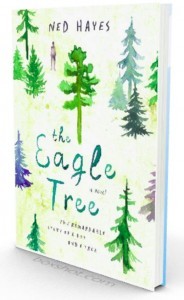 is now available from your local bookstores, Amazon and Barnes & Noble.
is now available from your local bookstores, Amazon and Barnes & Noble.
“The Eagle Tree is a gorgeously written novel that features one of the most accurate, finely drawn and memorable autistic protagonists in literature. Credible, authentic, powerful. A must-read.”–– Steve Silberman, New York Times bestselling author of NeuroTribes: The Legacy of Autism and the Future of Neurodiversity.
> Download Book Club Guide and Discussion Questions for THE EAGLE TREE (PDF)
Discussion Questions for readers:
1. How is March Wong, the main character, different in his perceptions from you? How would March describe these differences?
2. The main character, March Wong, is entranced by a tree in the first paragraph of the story. Why does the author introduce this obsession so early in the story?
3. What is the relationship between the main character’s parents? How do we know about this relationship?
4. How reliable a narrator is March Wong? Are there critical pieces of information that are left out of the story? How is this information communicated to the reader?
5. If your family were friends with March Wong’s family, what might you or your children think of March? What would your interactions be like with him on a daily basis?
6. Which characters serve as mentors to March? Which characters see themselves as helping March? Which ones are seen by March in that capacity? Is there a difference in perception?
7. The author has stated that the story is a “Romance,” and has talked about romance novels as a model for this story. If the story is a romance, then who are the “lovers” in this romance and who do they love?
8. To continue the romantic theme, many romances involve complications that separate potential lovers. What are the complications in the book?
9. Do other characters see these events or activities as complications, or as necessary parts of March’s experience in the world?
10. The author has stated that he does not want to characterize the main character as “autistic”. Why would that be the case? What does the author gain from this position? What does the book gain or lose?
11. What role does the work and writings of Annie Dillard play in the story?
12. Christianity and theological perspectives inform the story in the book. How does March’s perspective in the book differ from a “standard” perspective on Christianity? How is his perspective different?
13. The book is set in Olympia Washington. What critical information do you learn from this book about the area of Olympia? What important information about Olympia does March not share with you?
14. At the beginning of the book, March pointedly refuses to use metaphors or symbolic language to describe events in the book. By the end of the book, March is using metaphorical language in different situations to describe events. Why is this?
THE EAGLE TREE will appeal to readers who enjoyed the award-winning CURIOUS INCIDENT OF THE DOG IN THE NIGHT-TIME or Jim Lynch’s THE HIGHEST TIDE, which is also set in March’s—and the author’s—hometown of Olympia, Washington.
THE EAGLE TREE by Ned Hayes, is now available in print, e-book and audiobook from indie bookstores and from Amazon and Barnes & Noble.



> All about the story & history of THE EAGLE TREE
> Book Club Guide and Discussion Questions for THE EAGLE TREE (PDF version)
> Resources about topics in THE EAGLE TREE
> Book Trailer for THE EAGLE TREE
> Endorsements for THE EAGLE TREE
> Listen to a Reading of the book at the Rainier Writing Workshop
> THE EAGLE TREE is now available for purchase – print, e-book and audiobook
Book Club Guide was originally published on NedNote
October 16, 2016
mysharona1987:
C.S Lewis shows up every other Godfather in the...

C.S Lewis shows up every other Godfather in the world.
The Lion, the Witch and the Wardrobe was published today, back in 1950 !
October 16, 1950
October 10, 2016
Feature on Ned Hayes and The Eagle Tree (Amazon Transformations)
(reposted from Amazon’s Transformations blog)
He wrote a novel so far outside his comfort zone that he wondered if anyone would enjoy it. Kindle Scout readers answered with a resounding “yes.”
New characters often visit novelist Ned Hayes uninvited, so it wasn’t all that strange a few years back when the voice of a fictional teenage boy kept percolating in the back of his mind. Then things got more intense: “A friend of mine took me to this amazing old-growth tree, and the first lines of the story, where the boy saw the Eagle Tree and wanted to climb it, just rose up in me. I had to write the story down. I felt kind of carried away by a rushing stream, and I didn’t know where it was really taking me.”
I felt like I’d given someone a voice who didn’t have one.
— novelist Ned Hayes
The rushing stream carried Ned to The Eagle Tree, a novel unlike anything he’d ever written. He was a published author of historical fiction, and – even though writing novels wasn’t his full-time job, and his books had never reached massive numbers of readers – his work had earned him representation by an established literary agent. But far from being the historical fiction the agent expected, The Eagle Tree was set in modern times, and that percolating voice in Ned’s head turned out to belong to a teenage boy diagnosed with autism. In the novel, young March Wong climbs dangerously high into Washington’s forests to chase his passion for learning all about trees.
“When I first gave the manuscript to my agent, she read it through and said, ‘Well, this is a really different kind of book, and I’m not sure I can sell this.’,” Ned says.
Ned didn’t push. He had his own doubts. “I was concerned that maybe it was a book that I had written just for my own pleasure and that I would be the only reader that really enjoyed it.”
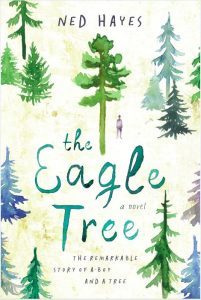 Ned knew a way to test whether the novel would ever speak to anyone but him. As a reader, he’d been participating in Kindle Scout, where authors can submit their never-before-published books. Readers see excerpts from each book, and they can nominate their favorites to receive a publishing contract from Amazon. Ned submitted The Eagle Tree and waited to see if anyone would nominate it. He was about to be carried away by another rushing stream.
Ned knew a way to test whether the novel would ever speak to anyone but him. As a reader, he’d been participating in Kindle Scout, where authors can submit their never-before-published books. Readers see excerpts from each book, and they can nominate their favorites to receive a publishing contract from Amazon. Ned submitted The Eagle Tree and waited to see if anyone would nominate it. He was about to be carried away by another rushing stream.
“One of the earliest comments I received,” Ned starts to say, surprising himself by choking up, “was from somebody who had a family member who was on the autism spectrum. They said that this book gave them insight into their family member in a way that they never expected, and it changed their entire relationship. And I just felt really moved by that. Because I felt like I’d given someone a voice who didn’t have one.”
The response from Scout users was overwhelming. The Kindle Scout team also saw serious potential in Ned’s work and shared his manuscript with Carmen Johnson, an editor at Amazon Publishing’s Little A imprint. Carmen loved it. She worked with Ned to release Kindle, paperback, and audiobook versions of The Eagle Tree. Thinking back to the exciting weeks when everything came together, Ned says, “Amazon really ended up opening a huge number of doors for me.”
More than 75,000 readers later, the character of March Wong continues to connect with people. Steve Silberman, whose NeuroTribes appeared on many of the most prestigious lists of the best books of 2015, praised Ned’s “gorgeously written” book for featuring “one of the most accurate, finely drawn and memorable autistic protagonists I’ve come across in literature.”
The success of The Eagle Tree has opened new doors for Ned. He’s collaborating with fellow artists on a graphic novel and an independent film based on the book. He’s also using the bulk of his book royalties to launch OLY ARTS, an arts and culture magazine with print, online, and mobile app editions. He says he wants to “spread the word about the wonderful artists, actors, writers and musicians in the Olympia area who don’t have the megaphone they need to earn a living wage for the amazing work they do.”
The first OLY ARTS issue’s 10,000 copies were supposed to last 12 weeks. “It sold out in two-and-a-half weeks flat,” Ned says beaming. “So there’s a lot of interest and excitement, and it’s fantastic to know that readers of The Eagle Tree made this all possible.”
HIGHLIGHTS
Lives in: Washington state
Ned Hayes was a part-time author of historical fiction when he got the idea forThe Eagle Tree. The novel was so different from his previous work that he feared nobody but him would like it.
He decided to submit the novel to Kindle Scout – a place where authors can share their never-before-published books and customers can nominate their favorites to be published.
Support from Kindle Scout readers helped The Eagle Tree land a publishing deal with Amazon Publishing’s literary imprint, Little A, and a bigger audience than Ned has ever reached before.
Feature on Ned Hayes and The Eagle Tree (Amazon Transformations) was originally published on NedNote
August 7, 2016
Words Matter: 15 Seconds of Truth
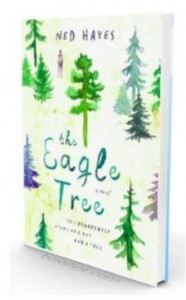 15 seconds of talking might not matter much. But what if those words are going to be seen by thousands of people – perhaps even hundreds of thousands of people? And what if your words can set a precedent for a whole class of people? What words would you choose then?
15 seconds of talking might not matter much. But what if those words are going to be seen by thousands of people – perhaps even hundreds of thousands of people? And what if your words can set a precedent for a whole class of people? What words would you choose then?
I had the opportunity to describe my new book The Eagle Tree on camera. My book is about a boy named March Wong who lives in Olympia Washington. March is a highly focused young man: he does evince characteristics of people I know and love who are autistic. He cares tremendously about trees and his great interest in trees influences his community in a powerful way.
The Eagle Tree became a bestseller in April, and I was subsequently invited to record a promotional video for the novel. Here’s the video:
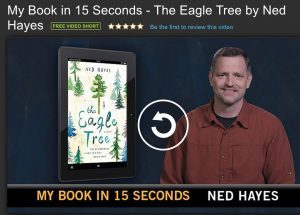
(Watch! The video is only 15 seconds long)
I chose my words carefully. Bestselling author Blake Crouch helpfully rehearsed with me at lunch. And the crew, the staff and the director provided much assistance.
Words matter, I kept thinking, the words I use can really matter here.
First of all, you only have 15 seconds to describe your book… you have to pack the entire story arc into just that amount of time. The director of the video mentioned how to heighten the drama in my little 15 seconds – she wanted the drama of my video to be very high!
“What if we said your character is ‘trapped in silence’ or ‘trapped in autism’?” said the director.
I knew she meant well – she just wanted to communicate an extreme sense of what was at stake in the story.
“He’s not silent,” I replied. And that’s true – my character in the book is not silent at all – he is quite voluble when it comes to talking about trees. What I didn’t say is that even if March doesn’t choose to speak, he’s not necessarily “trapped” by that silence.
My character chooses not to talk to many people in the story. He doesn’t feel the need. He finds solace and meaning in silence, far beyond that found in the madding crowd of trivial expression he hears in people all around him. In fact, he occasionally feels “trapped” by people, and he leaves a City Council meeting because of the feeling of too many people around him – an experience that many other people share, from mild to extreme introverts, to those with social anxiety. Some autistic people share this experience too – but not all of them.
What’s even more important is that saying “trapped in autism” reinforces the whole idea that autism itself is a “condition” that “traps” people.
In fact, this idea has been used by some organizations to silence voices they disagree with, and to dismiss the voices of women or adults who are autistic. “Trapped” means that you aren’t part of the general human conversation: “trapped” may even mean your experience is not considered entirely human or entirely valid.
I refused to say that phrase, or to include it as a possibility.
Then the helpful director moved on from the “trapped” word – she wanted me to at least describe my character as “autistic” on camera.
“No,” I said. “I never describe the character as autistic.”
And in fact, I don’t. I never apply a label to my character, March Wong. That’s because I feel his primary identity is that of a person. Not a disability. Not a syndrome or a symptom. He is a person.
He may have difficulty with some things and find other things easier.
But don’t we all?
When I wrote this book, I was just writing from one person’s unique perspective. I wasn’t writing just “about autism” or “about disability” or even “about climate change.” I was merely telling a single human being’s story, with all of its complications, disconnections, uncomfortable disclosures and lack of self-awareness. We all have blindspots,” and March shares that human flaw.
“I’ve never described him as autistic,” I said. “And I’m not going to do it on camera.”
I didn’t want to use the “box” of autism to label my main character. He never describes himself that way, so how could I do so? I did not going to take the liberty of applying a label to him that he has not himself chosen.
I am grateful that other readers (including Temple Grandin!) have seen themselves and their own experience in the perspective of March Wong, my main character. They’ve said the experience they’re reading about is “authentic” to their own autistic experience. But there’s a difference between Temple saying that the experience she is reading about is “authentic,” and me saying this is what an “autistic” experience is like.
I am not on the autistic spectrum, as far as I know, and I can be considered neurotypical. Therefore, I don’t think it’s ok for me just to blithely label someone else with any term they have not named as their own.
Words matter. The fictional portrayals we make of people often influence how we think of people in the real world. Books like Harriet Beecher Stowe’s Uncle Tom’s Cabin and Ralph Ellison’s Invisible Man helped to change the national conversation about race and black Americans, while other books like No No Boy and The House on Mango Street shaped our understanding of the Asian-American and Hispanic-American experiences.
And it’s worth remembering that while my character is “fictional,” there are very real teenagers and very real adult people who are autistic, who aren’t helped by portrayals of their very real and immediate experiences as “trapped” or as a “syndrome” that can be easily labeled and dismissed.
Real-life autistic experiences may not fit in any particular box – even one that I create in an attempt to be helpful. My help is not needed for them. They have their own experiences which may not fall into a label applied by neurotypical people. And they may feel “trapped” by circumstances or by their employment situation or by a myriad number of other things, but it is not my label to apply to their reality and their experiences.
Every person is different. Every person who has different types of neurological wiring is also different. I’d like, in my work (at the very least) to respect these differences and approach people on their own terms and in their own preferred manner.
I hope, in my small way, to be an advocate and an ally for those who are not part of mainstream society. But that starts by not “mainstreaming” everyone and by not putting people in boxes or slapping unhelpful negative labels on people.
Instead, we can become allies and we can advocate for our friends and colleagues by first listening and learning to other people’s real experiences and valuing those experiences as valid expressions of humanity. I’m still learning here.
Won’t you come alongside me, to listen and learn too?
THE EAGLE TREE by Ned Hayes, is now available in print, e-book and audiobook from indie bookstores and from Amazon and Barnes & Noble.
> All about the story & history of THE EAGLE TREE
> Resources about topics in THE EAGLE TREE
> Book Trailer for THE EAGLE TREE
> Endorsements for THE EAGLE TREE
> Listen to a Reading of the book at the Rainier Writing Workshop
> THE EAGLE TREE is now available for purchase in print, e-book and audiobook
Words Matter: 15 Seconds of Truth was originally published on NedNote
July 29, 2016
‘It’s like in the great stories, Mr. Frodo. The ones that...
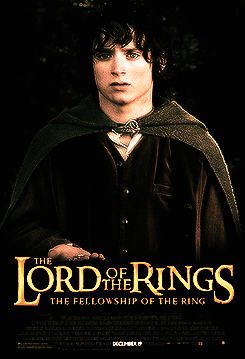
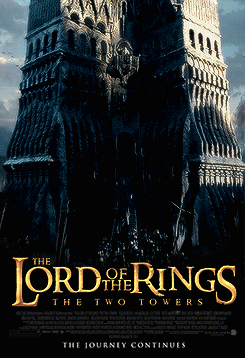
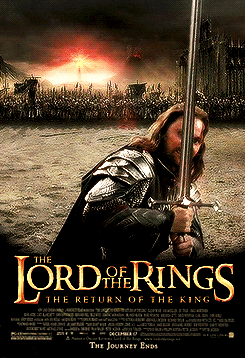
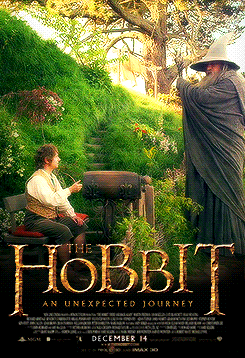

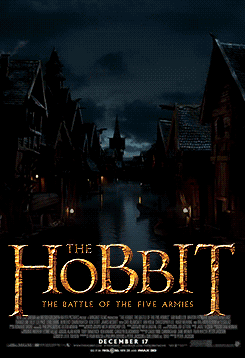
‘It’s like in the great stories, Mr. Frodo. The ones that really mattered, full of darkness and danger they were. Sometimes you didn’t want to know the end, because how could the end be happy. How could the world go back to the way it was when there’s so much bad that had happened? But in the end it’s only a passing thing, this shadow; even darkness must pass.’
–Samwise Gamgee
The Lord of the Rings was first published, July 29, 1954. Happy anniversary, LoTR !
July 19, 2016
BOOK REVIEW:
Everyday Aspergers is an unusual and powerful...
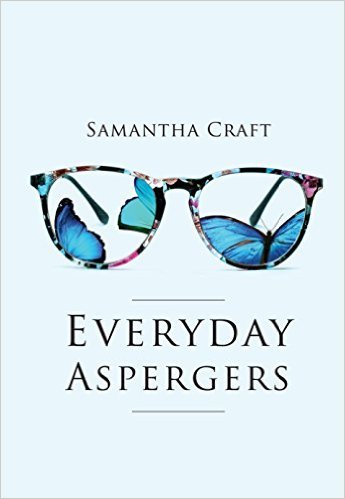
BOOK REVIEW:
Everyday Aspergers is an unusual and powerful exploration of one woman’s marvelously lived life. Reminiscent of the best of Anne Lamott, Everyday
Aspergers jumps back and forth in time through a series of interlocking vignettes that give insight and context to her lived experience as an
autistic woman. The humor and light touch is disarming, because underneath the light observations and quirky moments are buried deep truths about the human experience and about her own work as an
autistic woman discerning how to live her best life. From learning how to make eye contact to finding ways to communicate her needs to being a dyslexic cheerleader and a fraught mother of
also-autistic boys, Samantha Craft gives us a marvelous spectrum of experiences. Highly recommended for everyone to read
July 14, 2016
aboutdesolationrow:
The Seventh Seal (1956), Ingmar...

The Seventh Seal (1956), Ingmar Bergman.
Happy birthday to Ingmar Bergman!
July 14, 1918
June 30, 2016
Harry Potter was first published on June 30, 1997! Happy Harry...

Harry Potter was first published on June 30, 1997! Happy Harry Potter Day. #harrypotter (https://en.wikipedia.org/wiki/Harry_Potter)
June 15, 2016
plantion:
I made some pressed flower bookmarks over the...
June 1, 2016
"Allow yourself to be a beginner. No one starts off being excellent."
-
this is one of the most freeing things I have been told. (via dreamanddiscover)





